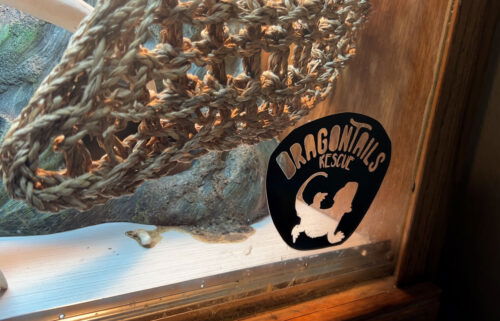How to pick the best toy for dogs based on 5 personality types
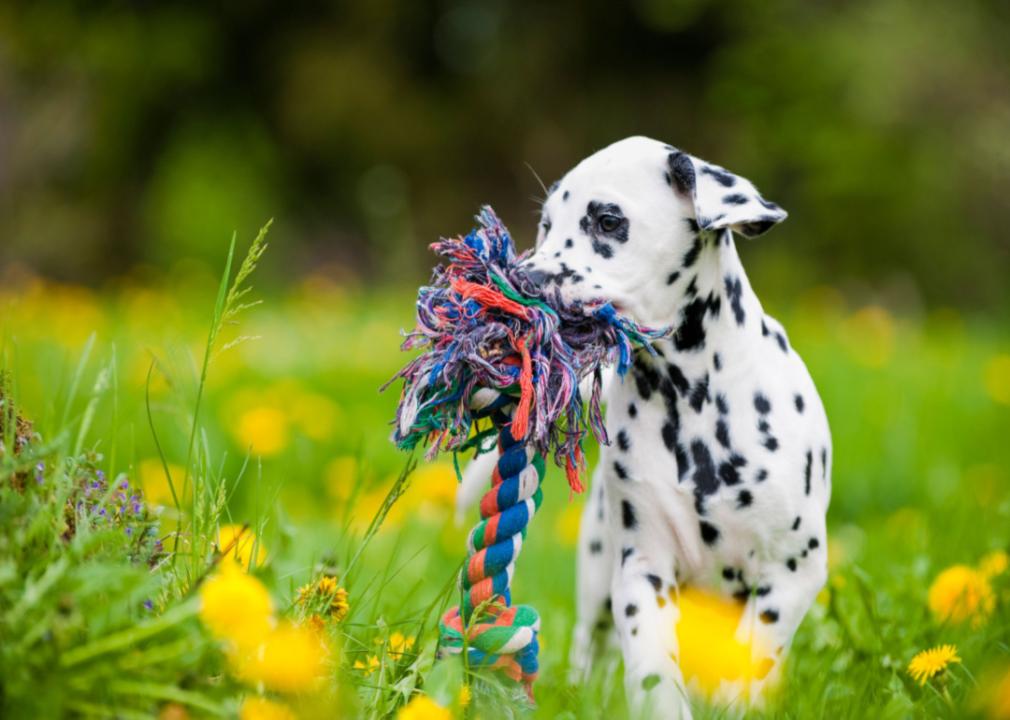
Dora Zett // Shutterstock
How to pick the best toy for 5 different types of dogs
A Dalmation puppy playing with a rope toy in a field of flowers.
Playing with your pooch offers them a laundry list of benefits. It can help prevent premature aging, reverse obesity, maintain healthy bones, ease arthritis, help remove toxins, and improve metabolism and insulin health. It helps puppies develop motor skills and can cause hormone and brain changes that teach them how to handle stressors and unexpected situations.
Play also encourages mental stimulation and can help combat boredom and anxiety, releasing energy they could otherwise channel into bad habits like chewing on your favorite sneakers.
Toys are a necessity, not a luxury, for your four-legged friends. Determining which dog toy best satisfies your dog’s play urges depends on their play habits, preferences, and temperament. Chew toys may be especially suited for dogs who love to gnaw on household items. Anxious dogs may prefer comfort toys like soft stuffies, and high-energy dogs may get excited by toys they can chase.
eTailPet harnessed info from top dog authorities like The Humane Society of the United States, the American Kennel Club, and veterinary practices to help you find the best toy to match your dog’s play personality type. Read on to see which of these five personalities best match your pet’s, and discover what toys can make the most of their playtime.
![]()
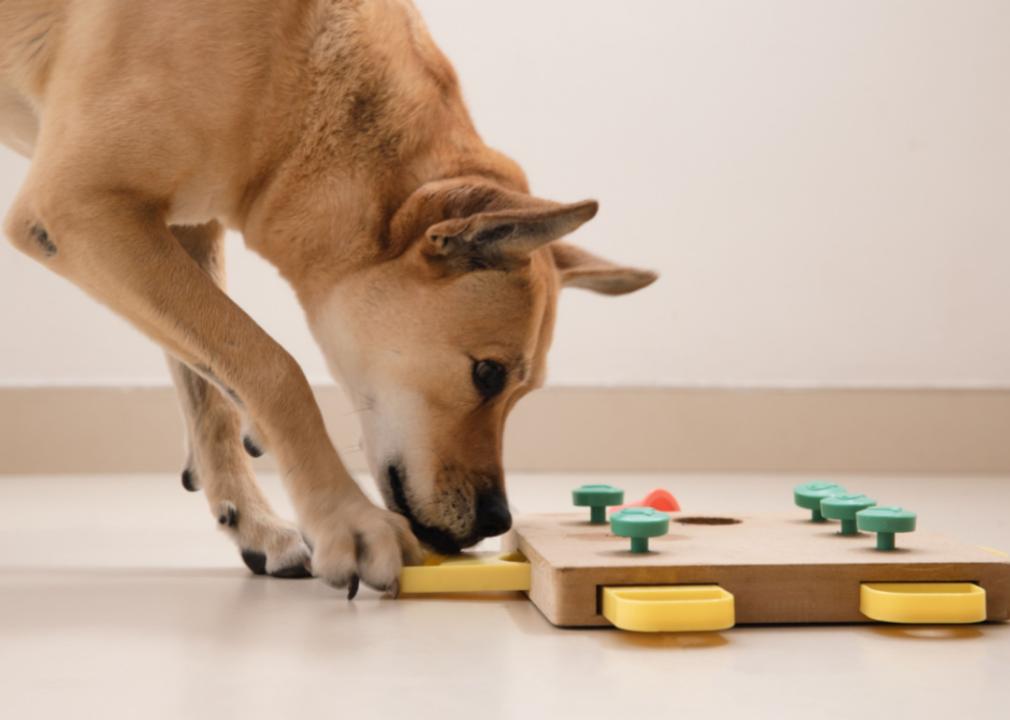
Lenti Hill // Shutterstock
Dogs craving mental stimulation
A light brown dog playing with a puzzle toy.
All dogs benefit from mental challenges. But many pups, especially breeds historically trained to do work like herding or hunting, flourish with mentally engaging play. Puzzle toys may be a great option for these dogs who love a good mind game.
These puzzle toys encourage dogs to swivel, spin, or slide certain parts to release a coveted kibble or treat. Solving these puzzles also helps slow down the quick eater to aid their digestion and avoid choking, vomiting, and bloating.
Pet owners can alter some puzzle-style toys to increase their difficulty once a dog learns how to solve them. Interactive electronic versions activate a dog’s seeking instinct. Nudging them to play a hide-and-seek game may also be a good fit for a dog who needs a challenge.
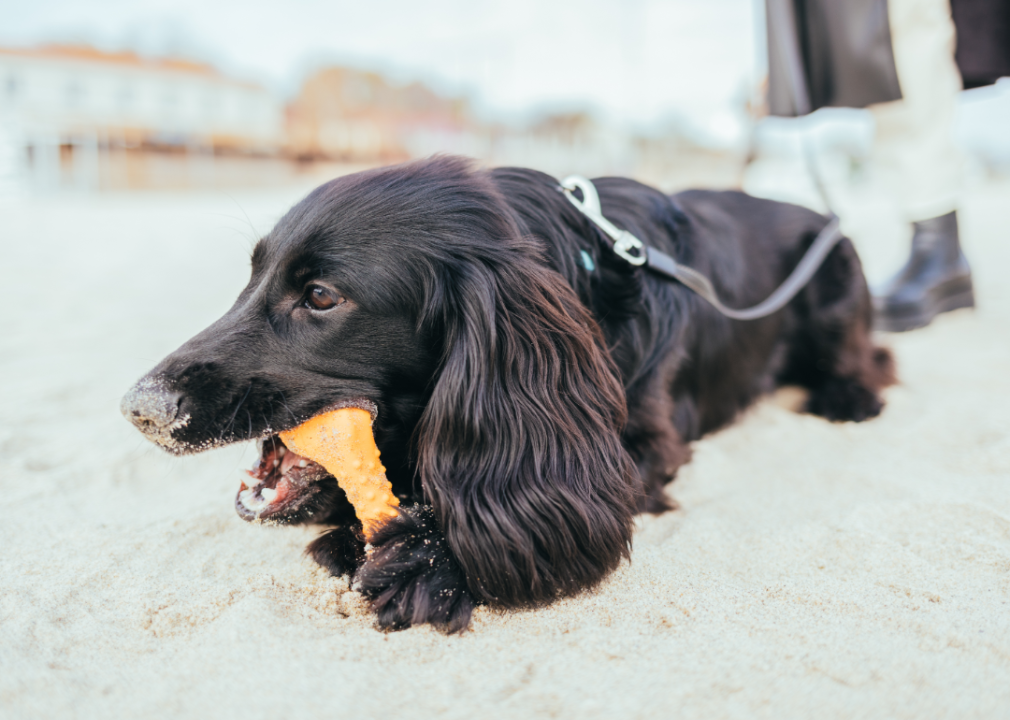
Canva
Dogs who love a good chew
A dark brown dog chewing on an orange toy on the beach.
Dogs explore with their mouths and not with their hands like humans, Colin Tennant, founder and chairman of the Canine & Feline Behaviour Association of Britain, told Live Science—part of why they chew incessantly. If your pooch loves to get their teeth into everything, it may be time to invest in chewing toys, making them less likely to take out their urges on things like furniture.
Pick a toy in a size that is easy for your dog to wrap its mouth around. Small dogs are best suited to smaller chew toys and so on. Also, choose a chew toy with a shape your dog can grasp properly (round balls, for example, can be tricky to hold).
For aggressive or destructive chewers, pick durable toys made of hard rubber or tough fabric and avoid toys with elements that can pose a choking hazard when torn apart, like squeakers or stuffing. For teething puppies, try teething chew toys that you can freeze to soothe tender gums.
If your dog is not a fan of traditional chew toys, try giving them dental chews or artificial bones made out of nylon or safe-to-swallow materials like pressed rawhide particles. Never give a dog (or any other pet) real bones because as they break, they shed tiny shards that can damage the mouth, throat, stomach, or intestinal lining if swallowed.
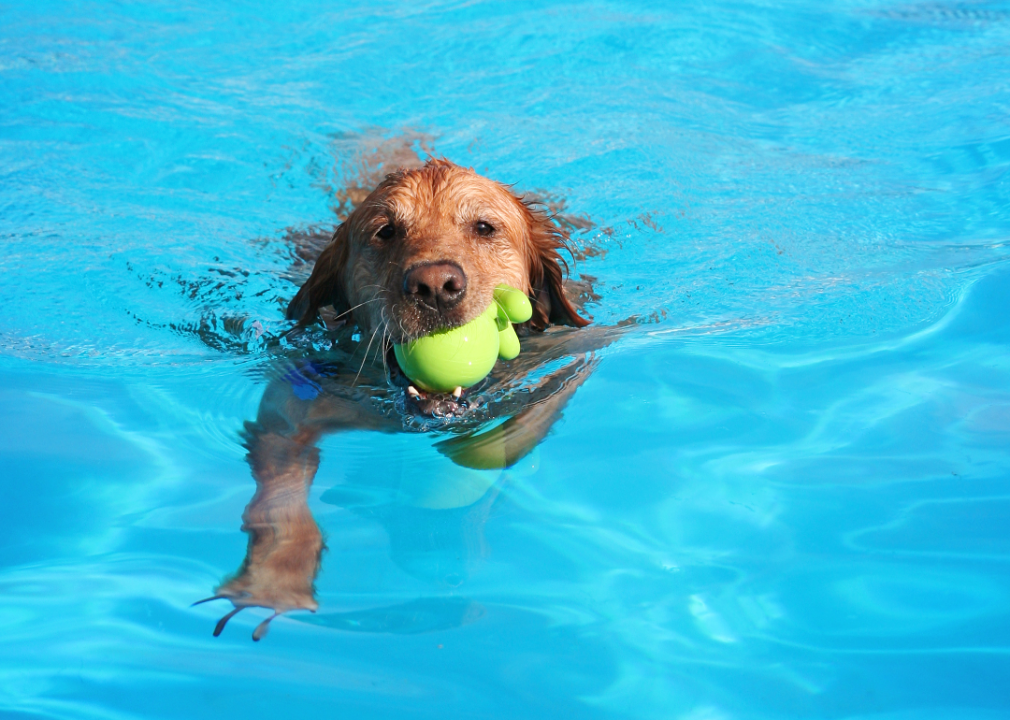
Canva
Dogs who love exercise
A yellow Labrador fetching a ball in a pool.
Some dogs are born to run, especially breeds like retrievers, border collies, rat terriers, and Australian shepherds. Certain breeds like Brittanys, Dalmatians, Doberman pinschers, and greyhounds also tend to have high exercise needs or thrive on activity.
While good old tennis balls may be the go-to chasing or fetch-type toys, they tend to wear down and break into pieces that can be harmful if wolfed down. A more durable rubber ball may be better if you want to log some serious fetch hours with your furry friend. Picking a ball with a bright color or design can also make it easier to find or identify your dog’s ball if you’re playing in a dog park or outside.
Frisbees are another classic chase toy. Choose discs specially made with canines in mind, which are softer on your dog’s mouth. You can also buy floating toys your pup can fetch out of pools, ponds, or lakes if they aren’t scared of water or are keen swimmers.
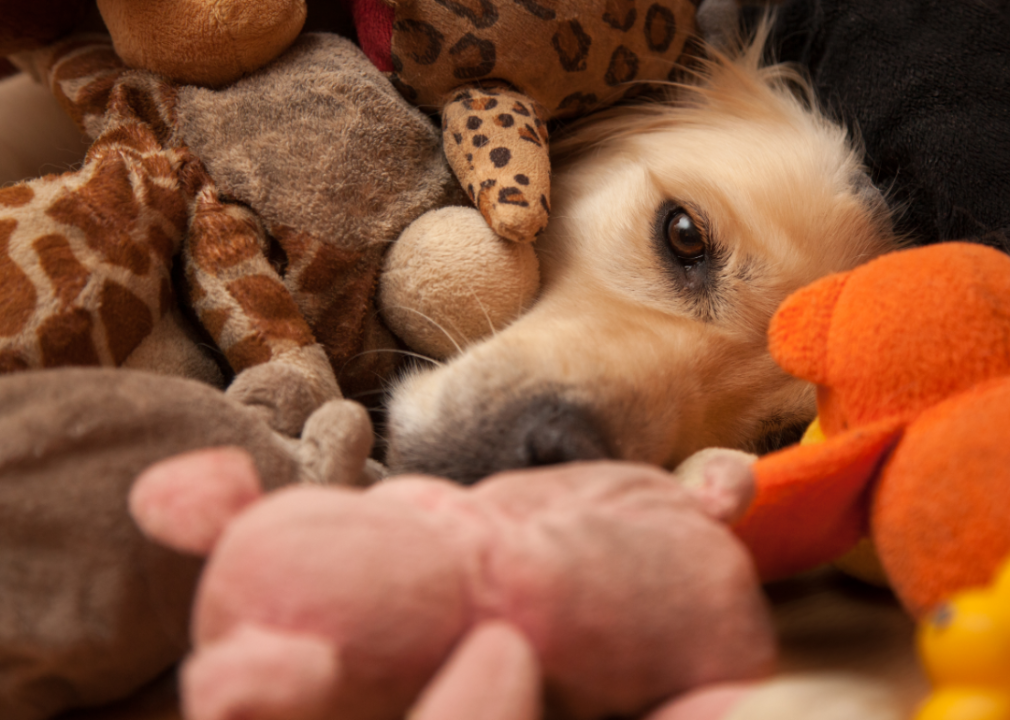
Canva
Dogs who need comfort
A close up of a the face of a blonde dog snuggled up covered by a bunch of stuffed animal toys.
Untreated anxiety disorders in dogs can cause behavioral issues that are often destructive or disruptive. Some of the most common causes of anxiety in dogs are fear, age, and separation.
The American Kennel Club reports around 14% of dogs experience separation anxiety, which develops when a dog is left alone. Signs of separation anxiety include excessive barking, urinating or defecating indoors, pacing and restlessness, destructive behavior like digging or chewing, and trying to escape.
Dogs with separation anxiety can benefit from toys that provide comfort, like plush toys and blankets. Stuffed toys with squeakers can be even more appealing to your pup. Some dogs will form a special bond with their comfort toy and carry it wherever they go or cuddle up with it for a nap. A good comfort toy for your dog could also be something soft that smells like you, like a dirty towel, sock, or t-shirt.
As a word of caution, avoid giving dogs that tend to destroy things any toys with parts that could cause problems if swallowed, like stuffing, buttons, or squeakers. Interactive toys may also not be the best option for anxious dogs as they can startle them.
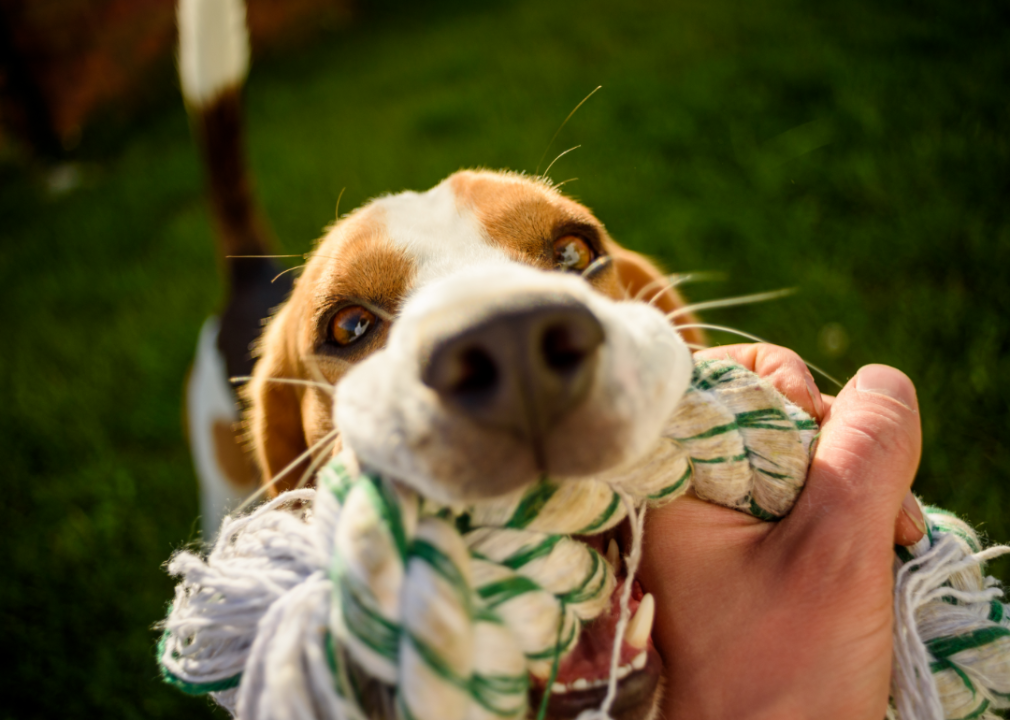
Canva
Dogs who are social butterflies
A beagle tugging on a rope toy in a person’s hand.
Most dogs are highly social creatures. Some dogs, especially puppies between 3 and 8 weeks old, tend to gravitate toward the company of other canines. On the other hand, some dogs get more enjoyment from interacting with people. Many social dogs love a combination of time playing with human and dog friends. For these pups, an independent play-oriented toy, like a puzzle-style or comfort toy, is probably not the best fit.
Instead, the American Kennel Club stresses that, in most cases, the best toy for your dog is one that involves you. Whether this is a ball or pet-friendly disc you can play fetch with, a tug toy you can mock battle with, or an old sock or stuffy you can hide and help them find. Chase and fetch-type toys and tug toys can also be excellent options for playtime among multiple dogs as long as you make sure neither dog gets too aggressive.
Story editing by Carren Jao. Copy editing by Kristen Wegrzyn. Photo selection by Lacy Kerrick.
This story originally appeared on eTailPet and was produced and
distributed in partnership with Stacker Studio.





